
By Sharon Cox

The Liberty Hall Historic Site (LHHS) Collections Committee believes that this table was made by inmates of the first Kentucky Penitentiary in Frankfort. (Fig. 1). While antebellum Kentucky Penitentiary chairs are uncommon (Fig. 2-left), post-Civil War examples (Fig. 2-right) are plentiful. Yet, this table is the only non-chair form known to the collections committee that might have been a standard product of the prison’s furniture industry, making it an important example of Kentucky furniture.
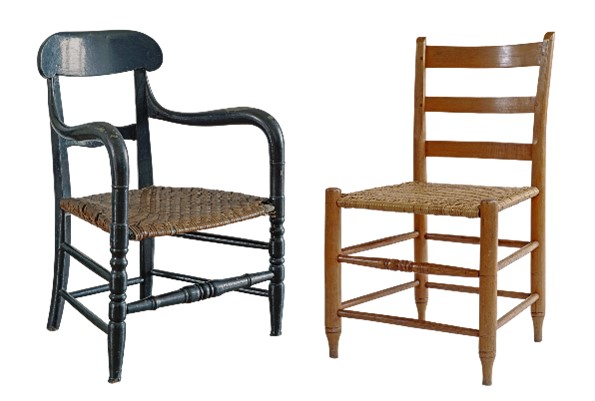
The table’s correlation to the Kentucky Penitentiary is seen in the leg turnings that terminate in a ring turn and acorn foot that are like those on a circa 1820 Penitentiary chair (Fig. 3). The table’s reddish-brown finish is believed to be original, since well-preserved Kentucky Penitentiary chairs have a similar finish. Closer examination reveals circular saw marks on the underside of the table’s apron giving clues to its age. (Fig. 4).

To further assess the theory that the LHHS table is a product of the Kentucky Penitentiary, we considered the following:
- Did the Penitentiary make furniture other than chairs?
- When did the Penitentiary’s furniture factory have access to a circular saw, which would help date the table?
- Who worked in the furniture factory, oversaw the production, or may have influenced the design of the chair forms and table?
Did the Kentucky Penitentiary make furniture other than chairs?
In 1817 and 1818, a Joint Committee appointed by the legislature to examine the accounts of the Kentucky Penitentiary noted the number of convicts employed in each industry as follows:
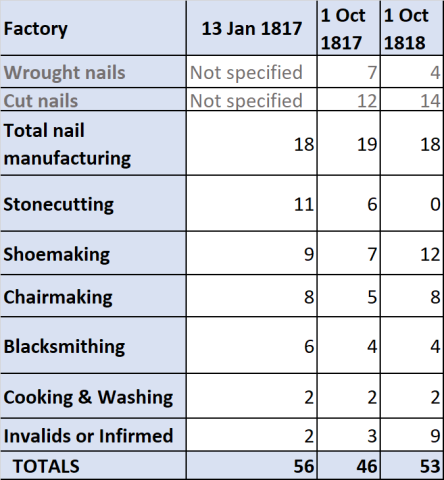
Examples of stone products made at the Kentucky Penitentiary include the Old Kentucky State Capitol (Fig. 6), the steps and foundations of Kentucky historic homes, including Liberty Hall (Fig. 7), and adorning the tops of Kentucky tables used to serve spirits (Fig. 8). Additional evidence of the stone and chair products produced by the Penitentiary are illustrated. (Fig. 9-10)

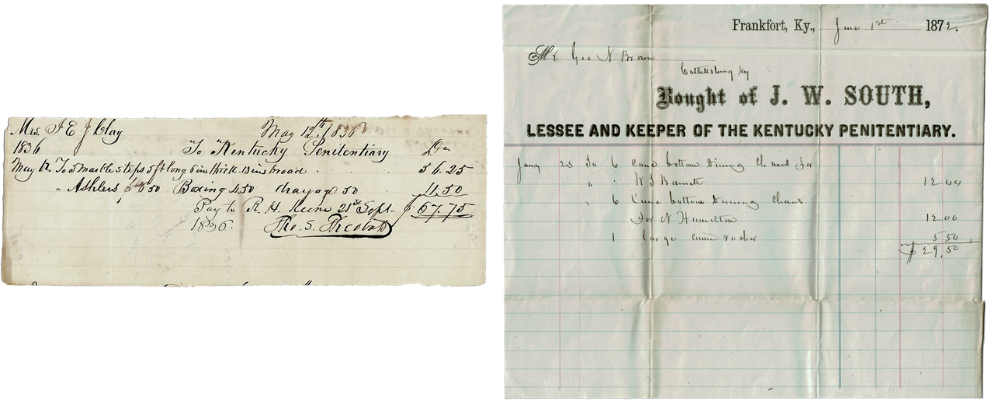
On January 30, 1815, the Joint Committee reported to the Senate that convicts are employed in the nailery and blacksmith business, making Windsor chairs and other articles in that branch of business, working in stone, and making shoes and barrels. Therefore, the Kentucky Penitentiary furniture products included non-chair forms by 1815.[i]
When did the Kentucky Penitentiary’s furniture factory have access to a circular saw?
There are three types of saw marks: pit saw marks, which were powered by hand; sash saw marks, which were powered by a water wheel; and circular saw marks, which required steam power. Joel Scott, keeper and lessor of the Kentucky Penitentary (1825-1834) installed a steam engine capable of running a circular saw and other efficient manufacturing equipment at the Penitentary circa 1825. Thus, the table could not date earlier than 1825.
Who may have influenced the design of the Kentucky Penitentiary’s chairs and furniture?
The 1801 records of the Penitentiary board reveal several possible craftsmen, including Thomas Settles, who was paid $9 for chairs, apparently for use at the Penitentiary. As an early Frankfort chairmaker, he may have influenced the Kentucky Penitentiary chair designs. Settles was born in Virginia circa 1760, was in Franklin County by 1801, and died there in 1816. He lived in a home called Hicklin Hill.[ii] While the location of his home is unknown, it may have been along Settles Branch (Fig. 11).
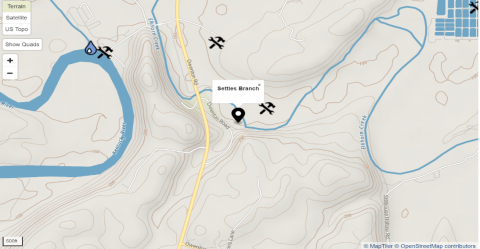
Thomas Elliott, superintendent of the chair factory in January 1805, would have influenced the chair designs at that time. The end of Elliott’s term as superintendent is unknown. He was an orphan of Thomas Elliott Sr., and apprenticed with cabinetmaker, Nicholas Bittner, in Scott County in 1795.[iii] Another possible influence includes Joel Scott, who leased the Kentucky Penitentiary from 1825 to 1834. Scott added new industries, markets, and a system that made the prison self-supporting.[iv] Other potential influences include War of 1812 British prisoners held at the Kentucky Penitentiary (Fig. 12) and Sam A. Norman, who began supervising the chairmaking business in 1893.
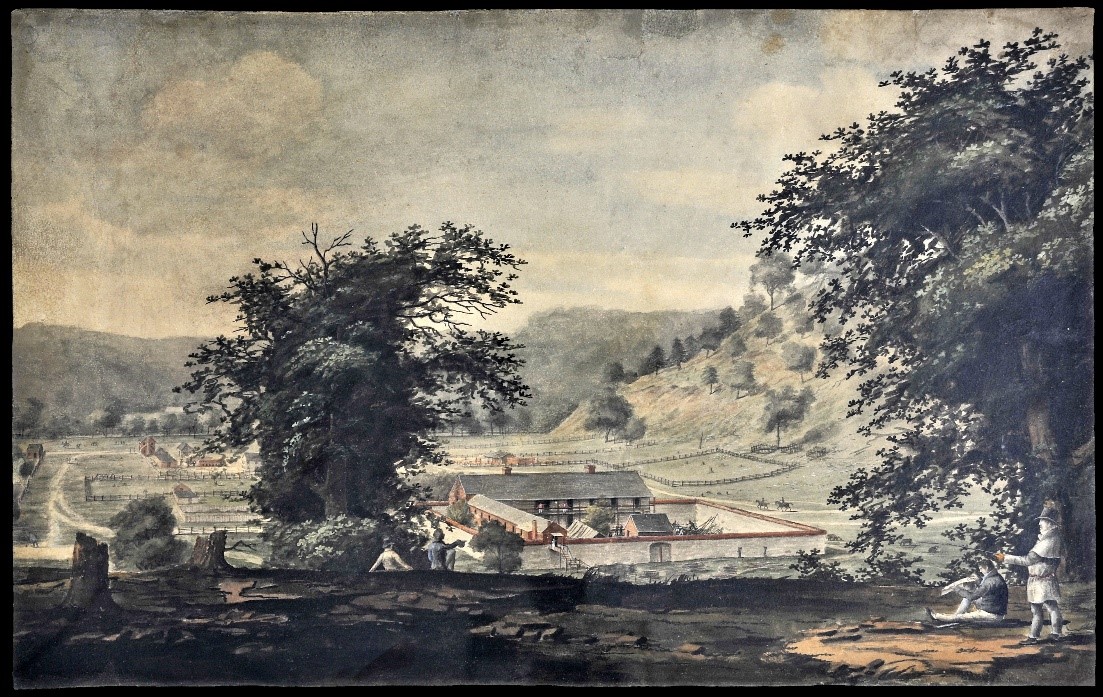
The Collections Committee believes the table was likely made at the Kentucky Penitentiary, and is an important example of Kentucky furniture.
Endnotes
[i] Sneed, William, A Report on the History and Mode of Management of the Kentucky Penitentiary from its Origin in 1798 to March 1, 1860 (1860), Frankfort, KY: Yeoman Office, p. 79
[ii] Darnell, Ermina Jett, Forks of Elkhorn Church (1980), p. 254.
[iii] Whitley, Edna Talbott, A Checklist of Kentucky Cabinetmakers from 1775-1859 (1981).
[iv] Knepper, Paul, “The Kentucky Penitentiary at Frankfort and the Origins of America’s First Convict Lease System 1798-1843,” The Filson Club History Quarterly, Vol. 69, (1995).
